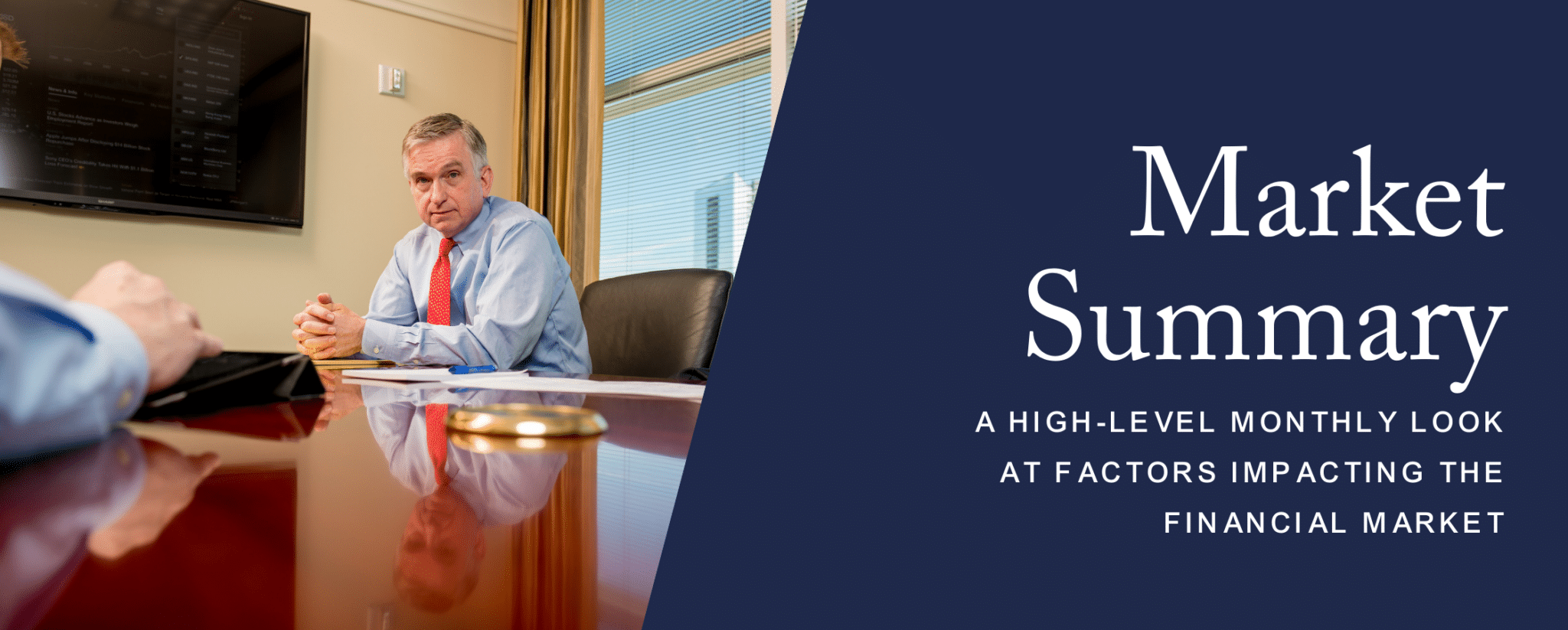
September 5, 2023
Stocks were broadly lower in August, with the damage somewhat limited by a rally late in the month. Rising bond yields were a headwind for equities as the market re-priced Federal Reserve pivot expectations on a better US growth outlook, the Fitch downgrade of US debt, and increased Treasury supply pressures. Other factors included stretched investor sentiment and China growth concerns. The S&P 500 declined 1.6% with energy (+1.8%) the only sector to register a gain. Utilities (-6.2%) and staples (-3.6%) were the worst performing sectors. Small-cap stocks were the worst performing asset class from a market-cap perspective and growth outperformed value in the large-cap and mid-cap ranges; however, growth lagged value in the small-cap range.
The market this year has been supported by mounting evidence of a soft landing, disinflation, and growing expectations that the Federal Reserve (“Fed”) is finished with its tightening cycle, which has become the consensus view, a marked contrast to expectations entering the year. The Fed may in fact be done – or at least close to it. All that’s left now is for the full brunt of the past year’s aggressive tightening to hit the economy. While the Fed may no longer be the market’s enemy, it is not yet investors’ friend either.
Recent economic data continued to come in stronger than expected (retail sales, housing starts, industrial production, durable goods orders, jobless claims), confirming that we’re not yet in recession. However, aggressive rate hikes, accelerating quantitative tightening, declining money supply, an inverted yield curve, declining leading economic indicators, and tightening bank credit all strongly suggest that a recession is likely just a matter of time. We believe the consumer will soon be facing stiffer headwinds. Excess pandemic-era savings are nearing exhaustion. Student loan payments are set to resume. Oil prices are rising once again. We may see additional labor strikes disrupt certain industries, most prominently the UAW and the auto industry. Banks continue to tighten credit availability and consumer credit card balances are rapidly rising once again at the same time that the cost of that credit has significantly increased.
Better than expected economic growth of late has driven a modest uptick in earnings estimate revisions, but we expect this to be fleeting. Estimates remain at risk in our view from slowing growth ahead as the impact of Fed tightening fully lands, which will likely lead to disappointing revenues and margins. It is worth noting that the typical seasonal pattern produces downward revisions between August and October, which explains why this is usually the most challenging period of the year for the stock market.
Following a notably choppy August, near-term market headwinds remain and could lead to further market volatility ahead: 1) historically, August and September have been the worst two trading months of the calendar; 2) stocks remain fully valued; 3) investor sentiment remains rather complacent; 4) earnings estimates remain at risk; 4) consumer headwinds are growing; 5) the CPI reversal off the June low may continue; and 6) bond yields are rising due to some combination of the following: the Fitch U.S. credit downgrade, $1 trillion + new Treasury issuance, accelerated quantitative tightening, and Yen carry trade reversal.